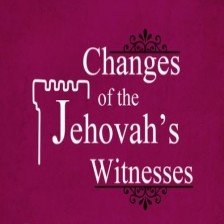Concerning this, J. Garnier writes: “Not merely Egyptians, Chaldeans, Phoenicians, Greeks and Romans, but also the Hindus, the Buddhists of China and of Thibet, the Goths, Anglo-Saxons, Druids, Mexicans and Peruvians, the Aborigines of Australia, and even the savages of the South Sea Islands, must have all derived their religious ideas from a common source and a common centre. Everywhere we find the most startling coincidences in rites, ceremonies, customs, traditions, and in the names and relations of their respective gods and goddesses.”—The Worship of the Dead, London, 1904, p. 3
Insight On the Scriptures-Volume I. 1988. p. 973
“The cross in the form of the ‘Crux Ansata’ . . . was carried in the hands of the Egyptian priests and Pontiff kings as the symbol of their authority as priests of the Sun god and was called ‘the Sign of Life.’”—The Worship of the Dead (London, 1904), Colonel J. Garnier, p. 226.
Reasoning From the Scriptures. 1985, 1989 ed. p. 91
The book The Worship of the Dead points to this origin: “The mythologies of all the ancient nations are interwoven with the events of the Deluge . . . The force of this argument is illustrated by the fact of the observance of a great festival of the dead in commemoration of the event, not only by nations more or less in communication with each other, but by others widely separated, both by the ocean and by centuries of time. This festival is, moreover, held by all on or about the very day on which, according to the Mosaic account, the Deluge took place, viz., the seventeenth day of the second month—the month nearly corresponding with our November.” (London, 1904, Colonel J. Garnier, p. 4)
Reasoning From the Scriptures. 1985, 1989 ed. p. 181
Provided by: Forgotten Books
